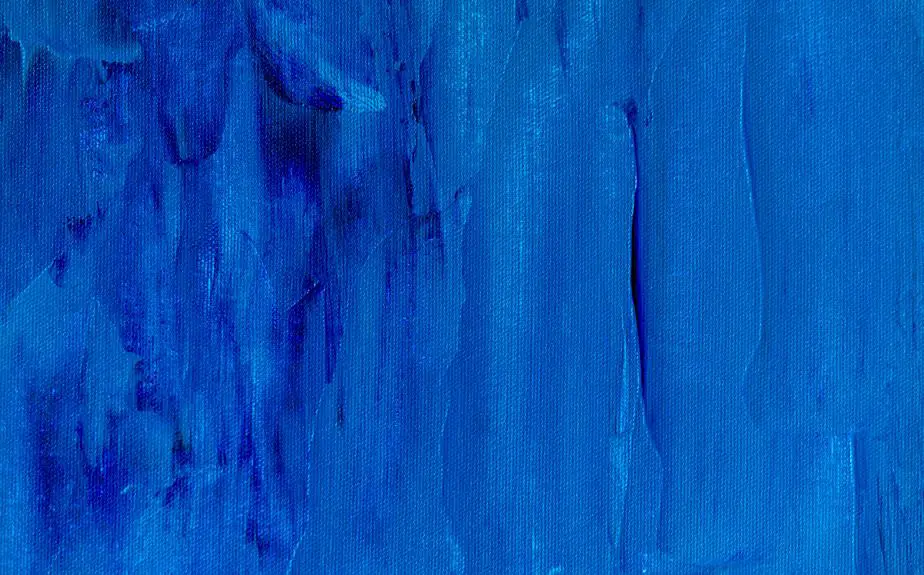When you're ready to use fabric paint on canvas, the first step is crucial: preparing your surface properly. You'll want to start with a clean canvas and consider applying a layer of gesso to enhance the vibrancy of your colors. Choosing the right fabric paint is equally important, as not all paints are created equal. Techniques like stenciling and layering can transform your project, but understanding how to manage each step will make a significant difference in the outcome. Curious about how to protect your artwork once you've finished?
Table of Contents
Key Takeaways
- Choose the right fabric paint by checking for durability and compatibility with your application method.
- Prepare your canvas by cleaning it and applying a layer of gesso for improved paint adhesion and vibrancy.
- Use stencils for detailed designs and practice layering techniques to add depth to your artwork.
- Allow each paint layer to dry before adding more colors, and consider using transparent paints for blending effects.
Choosing the Right Fabric Paint
Choosing the right fabric paint can make all the difference in achieving vibrant, lasting designs on your projects. When you're selecting fabric paint, consider the type of fabric you're working with. For canvas, you'll want a paint that adheres well and can withstand washing without fading. Acrylic fabric paints are popular because they're versatile and come in a variety of colors.
Check the label for specifics. You'll often find paints labeled as “permanent” or “washable,” which indicates their durability. If you're aiming for a specific finish, like matte or glossy, look for those terms too. Some paints even have special finishes that can add texture or shimmer to your designs.
Also, consider the application method. If you prefer brushes, ensure the paint is suitable for that. For stencils or airbrush techniques, look for fabric paints specifically designed for those applications.
Lastly, don't forget to test the paint on a scrap piece of fabric. This way, you'll see how it looks when dry and ensure it meets your expectations before committing to your final piece.
The right fabric paint sets you up for success!
Preparing Your Canvas Surface
To ensure your fabric paint adheres properly and achieves the best results, properly prepare your canvas surface before starting your project.
First, choose a clean, dry canvas. If you're using a pre-stretched canvas, check for any dust or debris. Wipe it down with a damp cloth to remove any particles that could interfere with your paint application.
Next, consider applying a layer of gesso, which helps create a smooth, even surface. Gesso also enhances the paint's vibrancy and longevity. Use a brush to apply a thin, even layer and let it dry completely before moving forward. This step is especially important if your canvas has a rough texture.
Once your gesso is dry, you might want to lightly sand the surface for an ultra-smooth finish, but this is optional. After sanding, wipe the canvas again to remove any dust.
Techniques for Application
When it comes to applying fabric paint, you'll want to explore stenciling for precision and layering for depth.
Stenciling helps you create clean lines and detailed designs, while layering allows for a rich, textured finish.
Mastering these techniques can elevate your fabric art to a whole new level.
Stenciling for Precision
Stenciling allows you to achieve clean, precise designs on fabric, making it a popular choice for crafters and DIY enthusiasts alike. To get started, select a design that fits your project. You can either purchase pre-made stencils or create your own using sturdy materials like plastic or cardstock. When you're ready, secure your stencil to the canvas with painter's tape to prevent any movement.
Next, choose a fabric paint that suits your project. It's essential to use a brush or sponge that won't overload with paint, as this can lead to bleeding under the stencil. Apply the paint using a dabbing motion rather than brushing, which helps control the amount of paint on the fabric. Be careful to avoid excessive pressure; otherwise, the paint might seep underneath.
Once you've finished applying the paint, carefully lift the stencil away while it's still wet for the best results. Allow your design to dry completely before moving on to any other steps in your project. Stenciling is an easy way to add intricate designs to your fabric, letting you unleash your creativity with precision.
Layering for Depth
Layering fabric paint adds depth and richness to your designs, allowing you to create stunning visual effects on your projects. To start, choose a base color and apply it evenly across your canvas. Let it dry completely before proceeding to the next layer. This initial layer will serve as the foundation for your artwork.
Once your base is dry, select a contrasting or complementary color to add dimension. Use a sponge, brush, or even a palette knife to apply the second layer. Vary your application technique—dab, swipe, or blend—to achieve different textures. Remember, you can always add more paint, but it's tough to remove excess once it's on the canvas.
As you layer, consider transparency. Mixing fabric paint with a fabric medium can create a translucent effect, allowing the base color to show through. This technique is perfect for creating shadows or highlights. Keep layering until you reach your desired depth, allowing each layer to dry before adding the next.
Layering and Blending Colors
To create stunning fabric designs, you'll want to master the art of blending and layering colors effectively. This technique not only adds depth to your artwork but also brings a unique vibrancy that draws the eye.
Here are three essential tips to help you achieve beautiful results:
- Start with a Base Layer: Begin by applying a solid color as your base layer. This sets the foundation for your design and makes it easier to blend other colors on top.
- Use a Wet-on-Wet Technique: While your base layer is still wet, add a second color. The wet-on-wet method allows the colors to merge seamlessly, creating smooth transitions and soft edges.
- Experiment with Transparent Colors: Incorporate transparent fabric paints for layering. These allow the underlying colors to show through, adding complexity and dimension without overwhelming your design.
Protecting Your Artwork
Protecting your fabric artwork is essential to ensure its longevity and vibrant appearance for years to come. After you've completed your masterpiece, consider how to shield it from damage and fading.
Start by allowing the paint to cure properly; follow the manufacturer's instructions regarding drying and setting times. This step is crucial for ensuring the paint adheres well to the fabric.
Once dried, it's important to apply a fabric sealant. Look for a spray sealant designed specifically for fabric paint. Ensure you apply it in a well-ventilated area and follow the directions carefully. This will create a protective barrier against dirt and moisture.
Additionally, avoid exposing your artwork to direct sunlight. Prolonged exposure can cause colors to fade and diminish the overall quality. If you're displaying your piece indoors, consider placing it in a spot that doesn't get too much sun.
Cleaning and Maintenance Tips
Keeping your fabric artwork clean and well-maintained ensures its beauty lasts over time. Regular care not only preserves the vibrancy of your colors but also extends the life of your canvas. Here are some essential cleaning and maintenance tips to follow:
- Spot Clean Immediately: If you spill anything on your artwork, address it right away. Use a damp cloth and mild soap to gently dab at the stain. Avoid scrubbing to prevent damaging the paint.
- Avoid Direct Sunlight: Keep your fabric artwork out of direct sunlight whenever possible. UV rays can fade colors over time, diminishing the piece's vibrancy.
- Store Properly: If you're not displaying your artwork, store it in a cool, dry place. Use acid-free tissue paper between layers to prevent unwanted creases or sticking.
Frequently Asked Questions
Can I Use Fabric Paint on Other Surfaces Besides Canvas?
Yes, you can use fabric paint on various surfaces like wood, paper, or cardboard. Just make sure the surface is clean and primed if needed, so the paint adheres properly and looks great when finished.
How Do I Fix Mistakes Made With Fabric Paint?
If you make mistakes with fabric paint, you can carefully wipe it away while wet, or let it dry and paint over it. You might also use a fabric-safe solvent for tougher spots.
Is Fabric Paint Safe for Children's Projects?
Yes, fabric paint's generally safe for children's projects, but always check the label for non-toxic certifications. Supervise their work to ensure they use it properly and avoid ingesting any paint. Safety first!
How Long Does Fabric Paint Take to Dry Completely?
Fabric paint typically takes about 24 hours to dry completely, but it can vary based on the thickness of the application and environmental conditions. You should always check the manufacturer's instructions for specific drying times.
Can I Mix Different Brands of Fabric Paint?
Yes, you can mix different brands of fabric paint, but it's best to test a small amount first. Some paints may react differently, affecting color and texture. Experimenting will help you achieve your desired outcome.
- How Does Ring Spun Cotton Affect Garment Fit and Shape Retention? - August 13, 2024
- What Are the Challenges in Producing Ring Spun Cotton? - August 13, 2024
- Is Ring Spun Cotton Suitable for Plus-Size Clothing? - August 13, 2024





